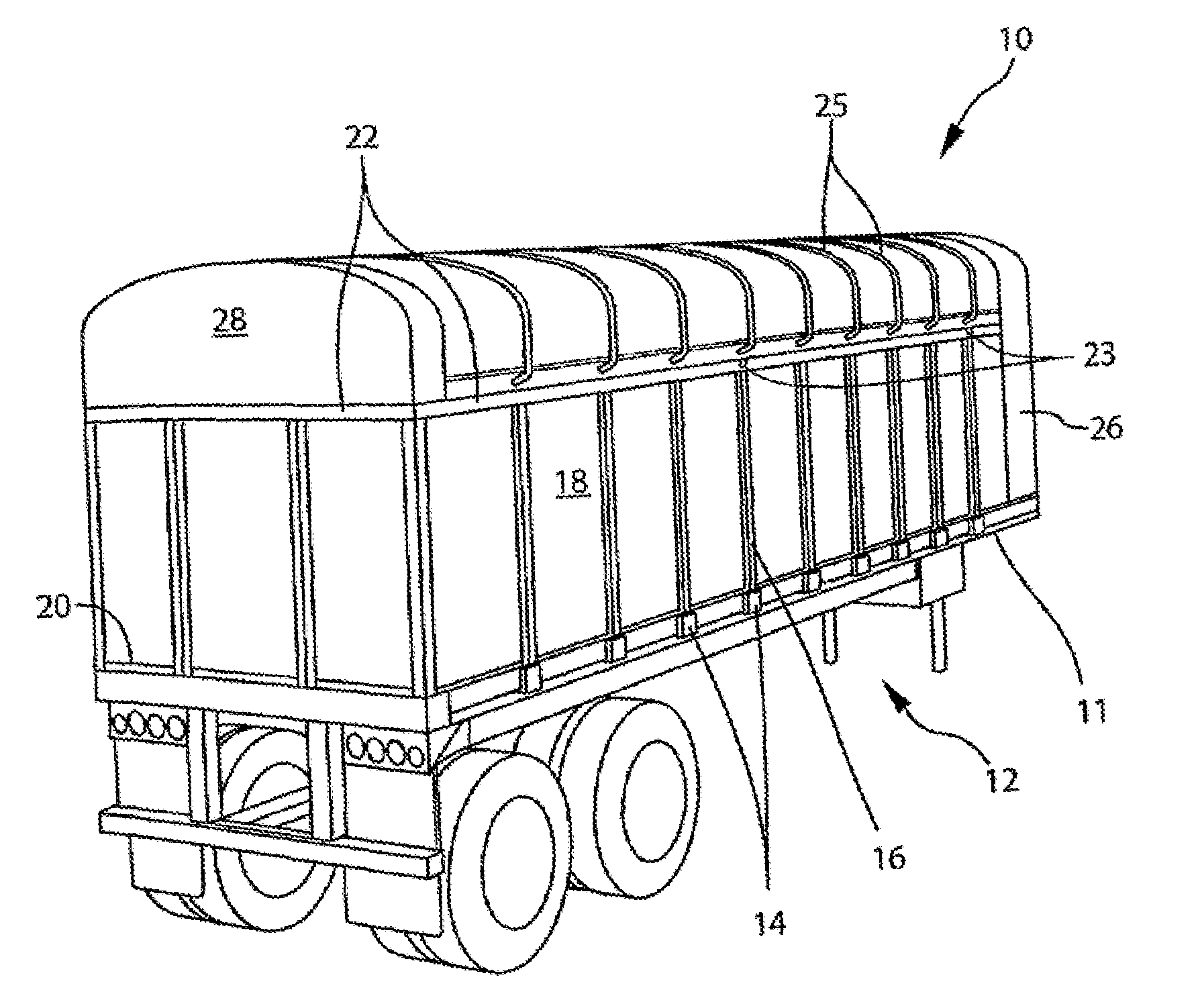Sidewall panel and tarpaulin cover system for flat bed trailers, and truck trailer incorporating same
a technology for flat bed trailers and tarpaulin covers, which is applied to the sub-units of superstructures, transportation items, building components, etc., can solve the problems of not having a smooth continuous outer surface, so as to improve aerodynamics, improve appearance, and reduce weight and cost
- Summary
- Abstract
- Description
- Claims
- Application Information
AI Technical Summary
Benefits of technology
Problems solved by technology
Method used
Image
Examples
first embodiment
[0135]With reference to FIGS. 2A-2B, the retainer pockets 14, according to the invention, include an inner or base section 30 and an outer or movable section 32 which may be selectively disposed in closed (stake-retaining) or open positions relative to the base section. The inner, base section 30 and the movable outer section 32 are collectively described herein as pocket sections 30, 32. The pocket sections 30, 32 may be formed of an appropriate material(s) such as aluminum, steel, composites, strong plastics, or combinations of these materials.
[0136]The base section 30 may be an integral, unitary member with a substantially C-shaped profile as viewed from above, as shown in FIG. 2A, although other shapes may be used if desired, e.g., curved, polygonal, etc. The depicted base section of FIG. 2A includes an inner attachment surface 34 which is adapted to be fixed to the trailer bed 11, two spaced apart parallel side walls 36, 37 extending outwardly from opposite ends of the attachme...
second embodiment
[0162]The shape of the outer section 60 of the stake 16 may be modified from that shown in the drawings, if desired, so that the outer section may also be engaged by the engaging member 110 of the pocket latch 155 in the second embodiment thereof.
[0163]As shown in FIGS. 13A-13B, the stakes 16 may also include caps 73, formed of plastic or other appropriate material, and fitted in the opposite ends of the inner section 58. The caps 73, where used, provide multiple functions, including: sealing the hollow interior of the inner section; receiving the ends of the hooks 66 against the interior thereof to maintain the inner and outer sections in tightly engaged relationship, while preventing the hooks 66 from directly engaging the inner section 58 (which could cause undesirable wearing of the inner and outer sections); guiding portions of a rail locking mechanism, as discussed further below; preventing metal components of the system from contacting each other; etc. The caps 73 are relativ...
PUM
 Login to View More
Login to View More Abstract
Description
Claims
Application Information
 Login to View More
Login to View More - R&D
- Intellectual Property
- Life Sciences
- Materials
- Tech Scout
- Unparalleled Data Quality
- Higher Quality Content
- 60% Fewer Hallucinations
Browse by: Latest US Patents, China's latest patents, Technical Efficacy Thesaurus, Application Domain, Technology Topic, Popular Technical Reports.
© 2025 PatSnap. All rights reserved.Legal|Privacy policy|Modern Slavery Act Transparency Statement|Sitemap|About US| Contact US: help@patsnap.com



